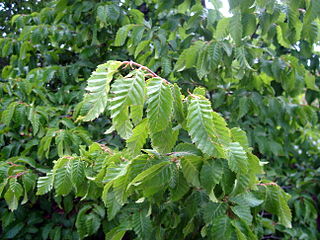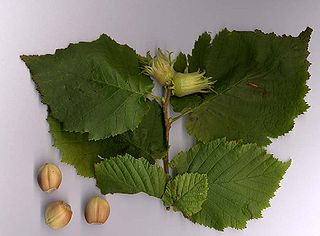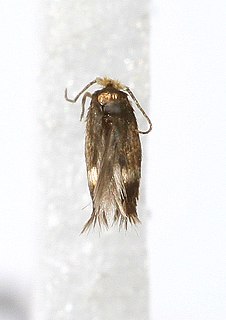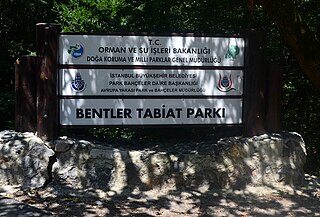Betulaceae
Alnus Mill.Alder
Contents
- Alnus glutinosa (L.) GaertnerCommon Alder
- Alnus glutinosa subsp. antitauricaYalt.Toros Alder(E)
- Alnus glutinosa subsp. barbata(C.A.Meyer) YaltırıkBearded Alder
- Alnus glutinosa subsp. betuloidesAnsinBirch-leaved Alder(E)
- Alnus glutinosa subsp. glutinosaSticky Alder
- Alnus orientalis Decne.Oriental Alder
- Alnus orientalis var. orientalisAnsin
- Alnus orientalis var. pubescensDippel

Alnus glutinosa, the common alder, black alder, European alder or just alder, is a species of tree in the family Betulaceae, native to most of Europe, southwest Asia and northern Africa. It thrives in wet locations where its association with the bacterium Frankia alni enables it to grow in poor quality soils. It is a medium size, short-lived tree growing to a height of up to 30 metres (100 ft). It has short-stalked rounded leaves and separate male and female flower in the form of catkins. The small, rounded fruits are cone-like and the seeds are dispersed by wind and water.
Betula L.Birch
- Betula browiczana A. GünerRize Birch(E)
- Betula litwinowii Doluch.Caucasian Down Birch
- Betula medwediewii RegelCaucasian Birch
- Betula pendula RothSilver Birch
- Betula recurvata (Ig. Wassil.) V. Vassil.(E)

Betula pendula, commonly known as silver birch, warty birch, European white birch, or East Asian white birch, is a species of tree in the family Betulaceae, native to Europe and parts of Asia, though in southern Europe it is only found at higher altitudes. Its range extends into Siberia, China and southwest Asia in the mountains of northern Turkey, the Caucasus and northern Iran. It has been introduced into North America, where it is known as the European white birch, and is considered invasive in some states in the United States and in parts of Canada. The tree can also be found in more temperate regions of Australia.
Betula recurvata is a species of plant in the Betulaceae family. It is endemic to Turkey.
Carpinus L.Hornbeam
- Carpinus betulus L.Common Hornbeam
- Carpinus orientalis Mill.Oriental Hornbeam
- Carpinus orientalis subsp. orientalis

Carpinus betulus, commonly known as the European or common hornbeam, is a hornbeam native to Western Asia and central, eastern, and southern Europe, including southern England. It requires a warm climate for good growth, and occurs only at elevations up to 600 metres (1,969 ft). It grows in mixed stands with oak, and in some areas beech, and is also a common tree in scree forests. Hornbeam was also known as 'Yoke Elm'.

Carpinus orientalis, known as the Oriental hornbeam, is a hornbeam native to Hungary, the Balkans, Italy, Crimea, Turkey, Iran, and the Caucasus. and occurs usually on hot dry sites at lower altitudes in comparison to the Carpinus betulus.
Corylus L.Hazel
- Corylus avellana L.Common Hazel
- Corylus avellana var. avellanaL.
- Corylus avellana var. pontica(C. Koch) Winkler
- Corylus colurna L.Turkish Hazel
- Corylus maxima Mill.Filbert

Corylus avellana, the common hazel, is a species of hazel native to Europe and western Asia, from the British Isles south to Iberia, Greece, Turkey and Cyprus, north to central Scandinavia, and east to the central Ural Mountains, the Caucasus, and northwestern Iran. It is an important component of the hedgerows that were the traditional field boundaries in lowland England. The wood was traditionally grown as coppice, the poles cut being used for wattle-and-daub building and agricultural fencing.

Corylus colurna, the Turkish hazel or Turkish filbert, is a deciduous tree native to southeast Europe and southwest Asia, from the Balkans through northern Turkey to northern Iran. It is also found grown wildly in the forests of Western Himalayan range in the north Indian state of Himachal Pradesh particularly in the temperate regions of districts of Kullu, Shimla, Kinnaur district and Chamba district.

Corylus maxima, the filbert, is a species of hazel native to southeastern Europe and southwestern Asia, from the Balkans to Ordu in Turkey.
Ostrya Scop.Hop-hornbeam
- Ostrya carpinifolia Scop.European Hop-hornbeam


















